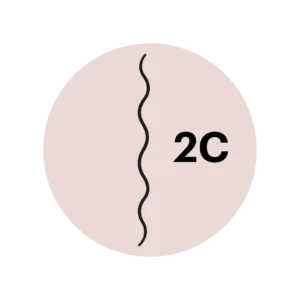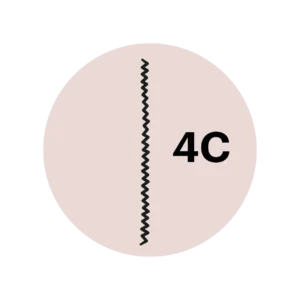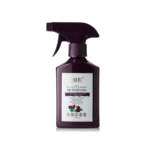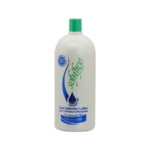A Comprehensive Guide To Curly Hair Types
Curly hair is far from a one-size-fits-all category, encompassing a diverse spectrum of textures and patterns. There are loose curls, bouncy spirals and ringlets, curls with a zigzag pattern, tight coily curls, and a whole range of curl types that fall somewhere in between. Understanding your unique curl type is one essential step to finding the right curly hair products and curly hair techniques that will keep your natural hair hydrated, healthy, and frizz-free.
Unlike with straight hair, the oils from the scalp don’t travel as effectively down the curly hair shaft, which makes curls extra prone to dryness. Understanding your unique curl type and hair porosity is an essential foundational step in unlocking the formula to maintaining healthy curls.But how much hydration and how heavy of a product you use all depends on your curl type. For example, the extra-hydrating products designed for someone with coily hair will likely be too heavy for someone with wavy hair. And products designed for those with wavy hair could leave coily curls and kinky hair dry, plus, prone to breakage.
Below, we dive into what the different curl types are and how you can identify your unique curl type. We’ve even highlighted a few go-to products for each curl type. Read on to start your journey to your best hair yet.
What Are the Curl Types?
The curl-type system is a small step in the right direction of knowledge. “Curly hair folks can use this to communicate with salons to find the right stylist and to determine the correct approach to cutting, colouring, and styling their hair!”
Curly hair is most often categorised into three different types:
- Type 2 (wavy)
- Type 3 (curly)
- Type 4 (kinky and coily)
Within each type, there are three subcategories (A, B, and C). These vary based on the curl’s shape and diameter. Type As tend to have a wider curl pattern while those who fall into a type C will have the smallest, tightest curls in the category. It’s worth highlighting that the hair-typing system provides a general framework for categorising curly hair types, yet the types of curls and their characteristics can still vary greatly for each individual.
This guide works to help individuals with curly hair garner the most beneficial hair care routine. “Curl classification is more than a label; it’s a gateway to understanding your hair’s behaviour and what products work best on your type of hair,” says celebrity hairstylist Ikeyia Powell. While your curl pattern may closely resemble one curl type, it’s not unusual for someone to have a combination of two or more curl types. Different hair textures can all be present on the same head. If this is the case, “Give the different curls what they need where they need it. If you have a patch of dry, textured hair in a specific spot, leave more of your conditioning leave-in, in that area. That could be a leave-in conditioner or styling cream. If you have looser curls underneath and tighter curls on top it can help to scrunch with a little extra or your product with hold such as a gel or mousse underneath for more holding power to pump those limp curls up. These are just two examples where there are so many variations of textures, curl types, and needs.”
While these nine curl types may not be an absolutely perfect fit for everyone, the idea is that you can find a narrow window that you identify with so that you can use products and techniques aligned with those hair types. From there, it’s all about experimenting and finding what works for your unique set of curls.
Type 2 Curls (Wavy Hair)
Type 2 hair is synonymous with wavy hair. These can range from loose, lax beach waves to S-shape waves that are almost on the brink of a full curl. This hair type typically lays flat around the roots and evolves into waves further down the hair cuticle. It’s also often the easiest curl type to care for as it isn’t typically too oily or too dry. However, type 2 hair will be weighed down by heavy curl creams. “For type 2 hair, I advise my clients to use lightweight leave-in conditioners, airy sprays, and volumizing foams to enhance their natural texture,” says Powell.
Type 2A
This hair type has a fine, barely there texture that’s very easy to straighten. People with this texture have to be wary of using heavy styling products that can easily weigh strands down, rendering them limp and lifeless. If that sounds like you, Matais-Bernard recommends opting for lightweight products “with a lot of hold.”


Type 2B
This hair type lies flatter at the crown with defined S-shape waves starting from the mid-length. Strands are thicker in diameter than a 2A, and you’ll have to put a bit more elbow grease into getting it straight.
Type 2C
These waves are thick and more susceptible to frizz. The S-bends are well-defined and begin at the roots. Between shampoos, use a non-lathering, sulfate-free co-wash like the Briogeo Curl Charisma Rice Amino + Shea Hydrating Co-Wash, so you don’t strip essential moisture from strands. This particular product was formulated to work beautifully on all curl textures.

Type 3 Curls: (Curly Hair)
Type 3 hair is when the strands begin to form actual ringlet curls. These can range from loose loops to tight and springy corkscrew curls. As you move into this curl pattern, the hair cuticle is typically more open and hair’s natural oils have a harder time traveling down from the roots. This makes type 3 hair more prone to frizz and loss of curl definition, so properly moisturizing the hair strands is essential. “Maintaining type 3 hair requires a healthy balance between hydration and styling. A personalized routine of effective moisturizing techniques and curl-enhancing products will help you achieve frizz-free, ringlet curls,” says Powell.
Type 3A
3A curls are large and loose and can often be about the size of a fat marker. This hair type is often very reactive to humidity but doesn’t have too much shrinkage. To emphasise 3A curls, you’ll want to use a product that hydrates and adds definition.


Type 3B
This hair type has springy ringlets with a circumference similar to that of a Sharpie marker. This texture can get dry, so look for curl gels that have humectants, like hyaluronic acid, glycerin, and aloe vera to attract moisture.
Type 3C
These curls are tight, corkscrew curls that are usually about the size of a pencil. These densely packed curls create a lot of volume but can easily become frizzy and prone to breakage if not adequately moisturised. Denser curl creams are essential for type 3C hair, as is a specialised curly hair shampoo. Make sure you’re washing the hair sparsely and steering clear of anything with sulfates.
Frizziness is common with this type, so if that’s not a look you’re into, use a sulfate-free, creamy cleanser, that won’t dry out your hair even more.

Type 4 Curls: (Kinky and Coily Hair)
Type 4 hair is considered to be kinky and coily hair. Type 4 hair can feature ultra-tight “S-shaped” curls or zigzag curls (sometimes referred to as “Z-shaped” curls) which don’t actually wrap around themselves like ringlets do. “The key to fostering healthy type 4 hair growth is to focus on keeping the strands moisturized and opt for low manipulation hairstyles,” says Powell. It also has the most shrinkage, sometimes shrinking up to 75% of the hair’s actual length. Because this hair type is so highly textured, this is also the driest and most fragile curl category that is most vulnerable to tangles and single-strand knots. Here is where heavier, intensely hydrating sulfate-free shampoos and styling products come into play.
Type 4A
People with Type 4A hair have dense, springy, S-pattern coils that are about the same circumference as a crochet needle.These curls will likely still feature tight corkscrews that may only be about the diameter of a toothpick. It’s likely that the hair may feature a mix of both 4A and 3C curls. The best products for this hair type will be super hydrating hair oils, curl gels, and leave-in conditioners.
A curl cream with a leave-in moisturiser is a must for adding more moisture to daily wash-and-go styling.


Type 4B
4B hair is when the curls can start to become Z-shaped. The hair may feature a mix of type 4A and 4B strands. This hair type is quite fragile and often has a high porosity, meaning it loses moisture very quickly. As you may have guessed, super hydrating leave-in products and deep conditioning hair masks are two hair care products that will keep this coily hair type looking great.
Type 4C
4C is the kinkiest, coiliest hair type there is. Sometimes the zigzag curl pattern is so dense and fine that it may be hard to see individual strands without stretching each strand out. However, 4C hair is also super versatile and can be worn in so many different natural hairstyles. If you have 4C hair, denser, super-hydrating products should be used daily to constantly replenish much-needed moisture.




